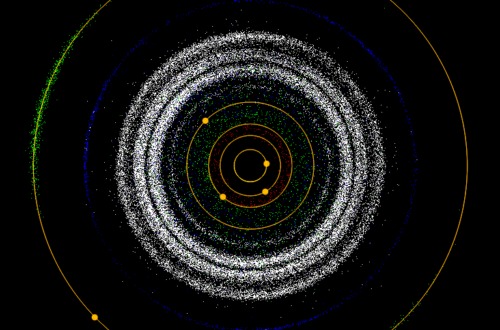Aquarius Constellation

Aquarius is one of the oldest of the recognized constellations along the sun’s apparent path, also known as the zodiac. It was among the 48 constellations listed by the 2nd century astronomer Ptolemy, and it remains one of the 88 modern constellations. Its name is Latin for “water-bearer” or “cup-bearer”.
It is found in a region often called the Sea because of all the constellations named after a water reference, such as Cetus the whale, Pisces the fish or Eridanus the river.
In illustrations, the brightest stars of Aquarius are represented as the figure of a man, while the fainter stars barely visible to the naked eye are represented as a vessel from which is pouring a stream of water. The water flows southwards into the mouth of the southern fish, Piscis Austrinus (another constellation).
Mythology
Aquarius was first identified by the Babylonians and represented the god Ea, who is commonly depicted holding an overflowing vase.
In the Greek tradition, the constellation became simply represented as a single vase from which a stream poured down to Piscis Austrinus. Alternatively Aquarius is sometimes identified with Ganymede, a beautiful youth in Greek mythology with whom Zeus fell in love. In the disguise of an eagle, which is represented by the constellation Aquila, Zeus carried him off to Olympus to be the cup-bearer to the gods.
In the Hindu zodiac it is called kumbha, meaning “water-pitcher”, showing that the zodiac reached India through Greek intermediaries.
Notable stars
- Gliese 876 was the first red dwarf star to be found to possess a planetary system. It is orbited by four planets, including one terrestrial planet 6.6 times the mass of Earth. It is located 15.3 light-years from Earth. Below are a diagram of the system and artist concepts of the four planets.
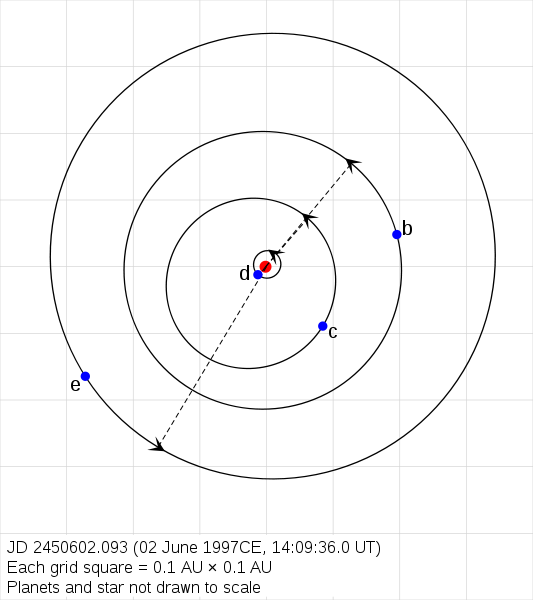
 Gliese 876 d
Gliese 876 d
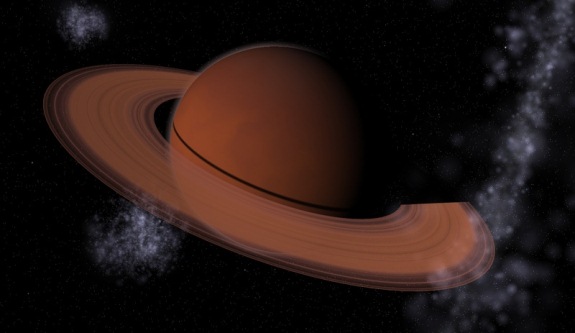 Gliese 876 c
Gliese 876 c
Concept by John Van Vliet
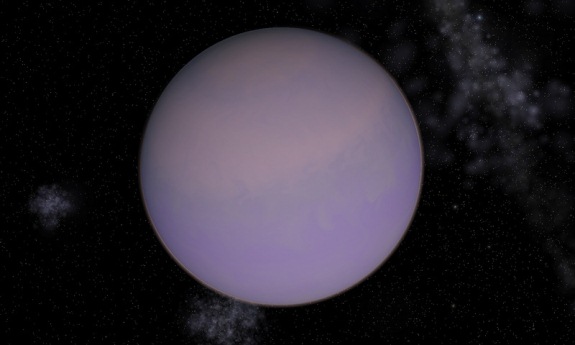 Gliese 876 b
Gliese 876 b
Concept by John Van Vliet
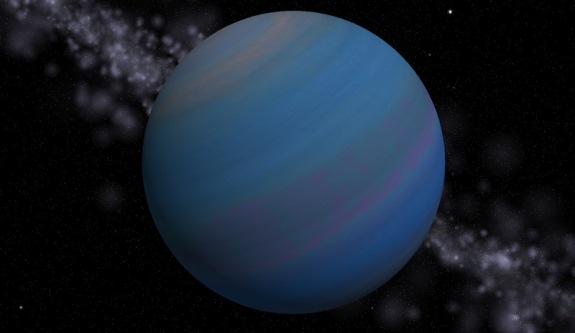 Gliese 876 e
Gliese 876 e
Concept by John Van Vliet
- The orange giant star 91 Aquarii is orbited by a planet, 91 Aquarii b. The planet’s mass is 2.9 times that of Jupiter and it orbits the star at an average of 0.3 AU. It is located 148 light-years from Earth.
- Gliese 849 is orbited by a Jupiter-like planet, Gliese 849 b. The planet’s mass is 0.82 times that of Jupiter and orbits at an average of 2.35 AU. It is located 28.6 light-years from Earth.
- Beta Aquarii (β Aqr) is a triple star also known as Sadalsuud which in Arabic means “Luck of lucks”. It is the brightest star of the whole Aquarius constellation.
- Alpha Aquarii (α Aqr) is a G-type supergiant and the second brightest star in the constellation Aquarius. It is also known by its traditional name, Sadalmelik, which in Arabic means “Luck of the king”.
Deep sky objects
Aquarius contains two globular clusters Messier 2, Messier 72, and the open cluster Messier 73. There are also two well-known planetary nebulae: the Saturn Nebula (NGC 7009) and the famous Helix Nebula (NGC 7293).
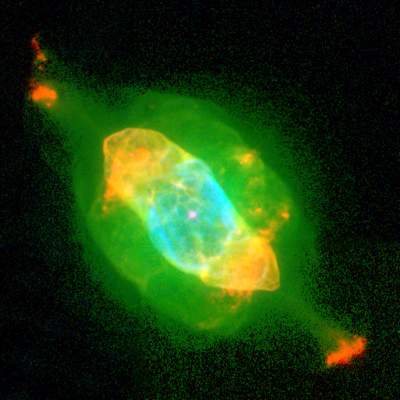 Saturn Nebula NGC 7009
Saturn Nebula NGC 7009
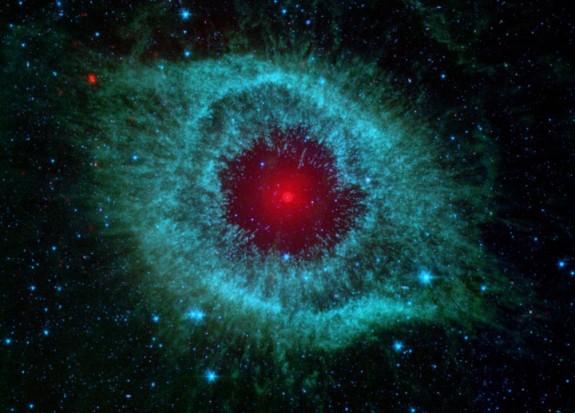 Helix Nebula NGC 7293
Helix Nebula NGC 7293
For more constellations see the Constellations Guide.
Would you like to receive similar articles by email?





